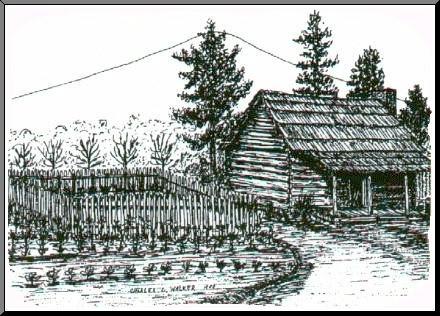

|
The story did not end with the arrival of the Cherokee people in Oklahoma. Despite this tragic event, they built successful communities that exist today. Old traces, historic buildings, and other sites are being preserved to commemorate the sorrowful journey. A variety of local, state, and national efforts have commenced to preserve and interpret Trail resources. A growing awareness of this important story--and those of other removed tribes--has stimulated interest to nationally recognize this chapter in our Nation's past. The Trail of Tears tells of the Cherokee's ordeal--but many tribes can tell similar stories. In 1987, Congress acknowledged the significance of the Trail by establishing the Trail of Tears National Historic Trail. The National Park Service administers the Trail in cooperation with federal, state, and local agencies; the Cherokee Nation and the Eastern Band of Cherokee Indians; interested groups; and private landowners. The National Park Service coordinates activities, offering technical and limited financial assistance toward preservation, development, and commemoration of the Trail. Management of Trail resources remains with landowners; non-profit groups; and federal, state, and local agencies. Activities include marking an auto tour route which closely parallels or follows the historical land routes with the official Trail marker; marking the Water Route; historical research; resource protection; development of Trail brochures and other publications, and production of exhibits and an interpretive film. Today, you can contemplate the Trail of Tears as you visit sites along the Trail of Tears National Historic Trail. We want to help you have a safe and meaningful visit. Remember that You're a Guest: Please respect your hosts' hospitality when you visit their certified sites. Leave everything as you find it. Summon owners only in emergencies. They retain the right to ask you to leave at any time. Obey signs--use designated parking areas--and limit your stay to the time necessary to appreciate the historic site. Protect the TraiI: Respect the features of the sites that you visit. Don't use metal-detectors or dig at sites--collect artifacts, or remove anything. Some sites contain burials. Please respect these sacred places. Stay Safe: Many parts of the historic routes are on road rights-of-way. Remain alert, and aware of your children's and pets' locations. Beware of traffic. Know where your nearest emergency help can be found. Auto tour route highways, closely following the historic land routes, are marked with the official Trail marker to aid you in visiting Trail sites. Contact the National Park Service for more information. Stop at local chambers of commerce and information centers to learn about Trail-related sites and other interesting features and activities. Many Trail sites lack amenities; plan ahead--use public restrooms and other facilities before you visit sites. Non-federal historic sites, Trail segments, and interpretive facilities become part of the Trail of Tears National Historic Trail through certification-- a voluntary process in which an owner or manager agrees to adhere to National Park Service standards for resource preservation and public enjoyment. Look for the official Trail marker at all certified locations. Updated lists of certified sites and facilities are issued periodically by the National Park Service's Long Distance Trails Group Office - Santa Fe. State, county, and city parks along the Trail route preserve Trail resources. Although not yet certified, they are open for public use. Some sites on the Trail of Tears are privately owned, while many sites are on or along existing highways. Consult guidebooks and ask permission before going on private land. The historic Trail route passes through and by lands now managed by several federal agencies, such as the USDA Forest Service, the U.S. Army Corps of Engineers, the Tennessee Valley Authority, and the National Park Service. Some units of these agencies may provide interpretive information related to the Trail of Tears. Check locally, or consult the National Park Service. The Trail of Tears National Historic Trail will only be successful with the hard work and dedication of public officials, citizen volunteers, and private landowners who want to preserve the historic resources of the Trail and make its story known The Trail can aid community efforts in historic preservation and interpretation, trails and green-ways, and other public recreation efforts. Many organizations are helping to plan and develop the National Historic Trail. The Trail of Tears Association, a non-profit organization formed in 1993 to promote public awareness and appreciation of the Trail, works closely with the National Park Service. Its address is: 1100 North University, Suite 133 Little Rock, Arkansas 72207 501-666-9032.
You can help with the Trail of Tears National Historic Trail by joining or supporting the work of the Trail of Tears Association, state and local historical societies, and other groups that promote or assist with the National Historic Trail. Landowners and site managers can pursue certification of their sites or Trail segments to further public use and protection of Trail resources. Permanent protection of these resources can be achieved by donation of lands or easements to land trusts or other appropriate groups. Financial contributions can support Trail programs. Donations of money, land, or easements may qualify as tax-deductible gifts. For more information, contact the National Park Service at the address listed.  National Park Service P.O. Box 728 Santa Fe, NM 87504-0728 505-988-6888
|


For more information on these and other events contact the Cape Girardeau Convention & Visitors Bureau.
Unauthorized use of the official Trail of Tears National Historic Trail logo (TM) is prohibited.
Credits: Traditional Cherokee homestead of the 1820's. Illustration by Charles O. Walker.
